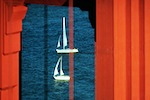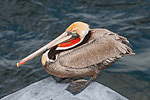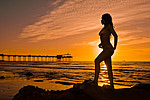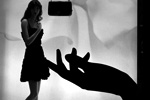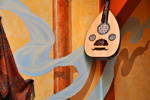Best Compact Superzoom Cameras
ALSO RAN:
FujiFilm Finepix F770 EXR
FujiFilm Finepix F770 EXR
When you first pull the Fuji F770 out of the box it is hard not to be impressed. The F770 is heavy and solid for its compact size and feels like it is extremely well-engineered. Its styling is excellent, with sleek casework, attractive curves, a smooth finish, a distinctive slightly forward sloping top deck, and a mode dial that sits at an angle on the top right rear of the camera as you look at it from the back. First impressions always count for something and the Fuji F770 is one of the best looking compact superzoom cameras around.
Unfortunately, the performance results were not as equally impressive. The camera was unpredictable in shot-to-shot performance in both accurate exposure and focus, its continuous autofocus in movie mode is extremely sluggish, and it stands in a class by itself as the camera with the most digital noise across the board at all ISO settings.
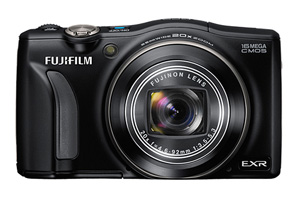 |
What's HOT about the FujiFilm F770EXR:
1. Capable of outstanding photos in bright light with high saturation subjects
2. 20x zoom range -- 25-500mm (same as the Canon SX260)
3. Bright LCD - the brightest of the six, easiest to see in daylight
4. High res screen - 921,000 dots
5. Better than average single shot speed - one frame every 1.3 sec, or one every 2.4 sec with zoom reset
6. Panorama mode
7. 3D photos
8. GPS
9. Low res movies at 320 fps - fastest in the group
10. On-board HDR
11. RAW (the only one in the group that has it)
12. Burst mode at a fast 11 fps
What's AVERAGE about the FujiFilm F770EXR:
1. Video at 1080p/30 - faster than the Pentax VS20 and Canon SX260, but not as fast as the Panasonic ZS20 at 1080p/60.
2. Larger sensor 1/2 compared to 1/2.3 in the rest of the group, but only meaningful if it makes better photos, which it can but too often doesn't.
3. 6400 and 12800 ISO - the only camera in the group with ISO above 3200, but resolution is reduced to 8 MP at 6400, and 4 MP at 12800. In both cases noise is a disaster. The super high ISO settings are a worthless feature.
What's NOT so not about the FujiFilm F770EXR:
1. Shot-to-shot reliability is unpredictable -- about the same as the Nikon S9300 and the Pentax VS20
2. Autofocus in movie mode is slow, lots of blur when moving the zoom
3. Lots of digital noise at all ISOs in moderate to low light, the most of any camera in the group
4. Extreme noise, color loss, and severe loss of sharpness at high ISO
5. Tilted top deck, clumsy for movie zoom lever control
6. A bit more expensive than the others, but not by a lot.
7. Pop up flash under left finger is extremely annoying
8. A bit heavier than most of the others--feels like a little brick
9. Terrible SD card door - makes for clumsy insertion and removal of memory card
A Look at the FujiFilm F770 EXR
The Fuji F770 performs its best in bright sunlight. With high color saturation subjects in bright light, especially those in the red/yellow part of the color spectrum, it is capable of outperforming every other camera in this shootout.
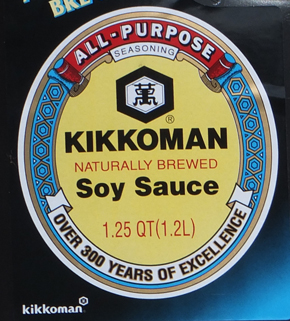
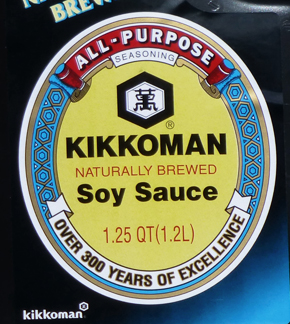
Fujifilm F770EXR Panasonic DMC-ZS20
In the demo above, the Kikkoman label is in bright sunlight. In this situation, the F770 is able to capture more accurate red and yellow than the ZS20 which shows a subtle green bias. On the other hand, the ZS20 image is higher in contrast, and when looked at closely it is sharper. Color can be corrected after the fact in a photo editor, but you'd rather have it accurate from the get go.
A primary complaint with the Fuji F770 is its excessive noise and color smearing in low to moderate light. This is easy to see in our PhotoScope side by side test shots, when comparing the F770 to the Panasonic ZS20:
In this comparison, look closely at the Colman's Mustard can. The F770 on the left has decidedly more noise and red color smear than the ZS20. The F770 also has a hard time rendering a faithful blue in moderate light. Focus on the SPAM can, and you'll see even at 200 ISO the blue is darker on the F770 than it is on the ZS20. Increase ISO to 800 or 1600, and blue on the F770 goes essentially gray/black.
The Verdict
The FujiFilm Finepix F770EXR is capable of taking excellent photos in bright sunlight, but it is unpredictable. The bright LCD screen makes the subject a bit more visible in sunlight, always a huge plus. In moderate and low light the picture quality suffers noise in excess of the competition, and its ability to see blue in moderate light is weak. The inability of continuous autofocus to track well during movies makes it unusable for anything but the most casual of video.
